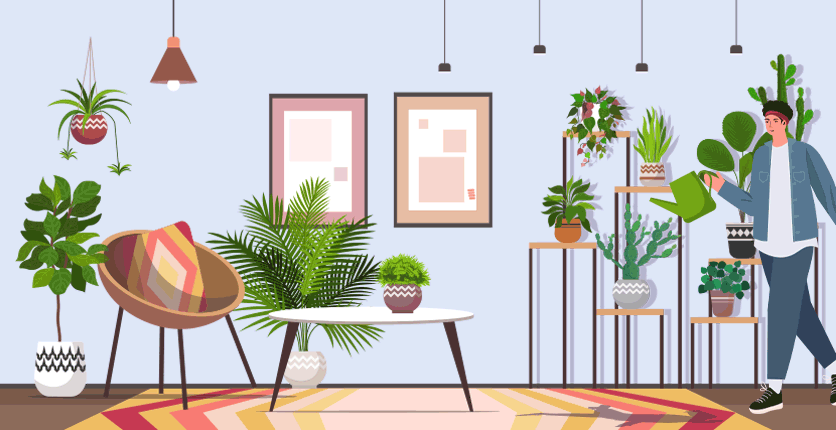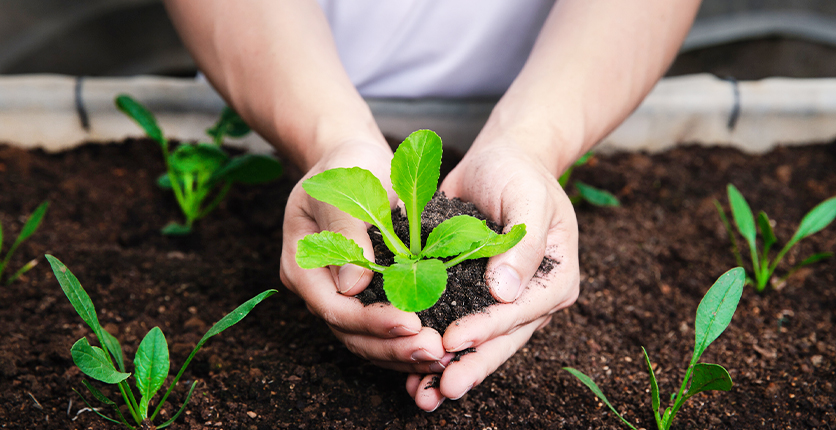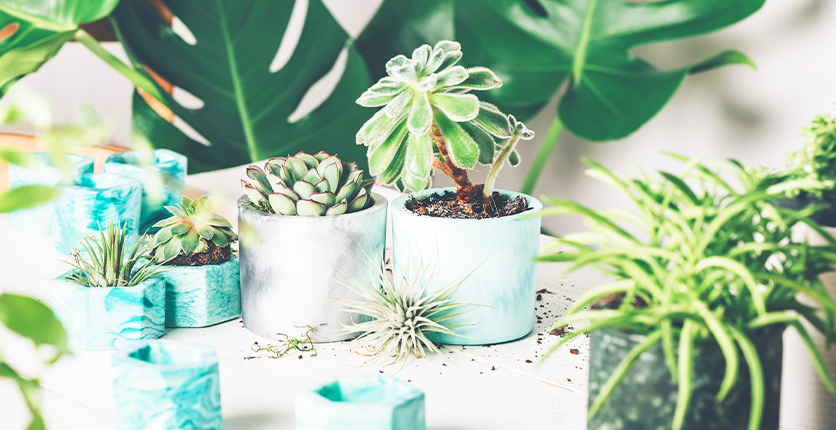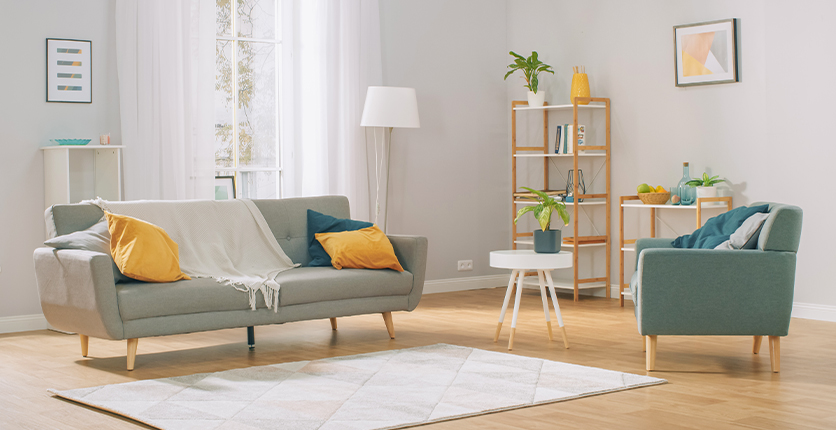Having more time at home this past year has created a new generation of plant hobbyists among some of us, with varying degrees of success. While some have found they have natural green thumbs and have nurtured a flourishing verdant collection, others have despaired over the sorry sights their once lush plants have become. We asked Dr Wilson Wong, Deputy Director at Jurong Lake Gardens, National Parks Board, for answers to some of our most pressing plant questions.
Q: We recently had some really wet weather and I’m hesitant about watering the plants as regularly as before because of the high humidity. Should I keep to the routine or adjust it based on the weather?
Dr Wong: On wet days when there is little or no sunlight, plants do not transpire as much and evaporation of water from the root zone may be reduced.
You can use your finger to feel for soil moisture at a depth of 1 to 2 cm below the surface. If it feels moist, you can water the plant a day or two after. You should also monitor your plant’s behaviour. If the plant has wilted and the soil feels dry, you should water the plant.
Q: Do grow lights really help? I bought a few online and they don’t seem to make any difference to my plants. What are the best grow lights to get?
Dr Wong: Grow lights do work to support growth of plants in dim areas. If they do not work, it is likely that they are too dim or placed too far from your plants for photosynthesis to occur. They also may not have been switched on for long enough.
It is difficult to recommend the best grow light, as different plants need a different spectrum of light for optimal growth. For most foliage houseplants, a simple LED daylight bulb can work and the colour of the light emitted is also pleasing to the eyes. It should be placed at least 15 cm away from the plant and switched on for at least 12 hours daily. Ensure the light emitted by the LED light is able to cover the entire plant.

Q: I have issues with aphids and scales on my plants and the store-bought insecticide spray doesn’t help very well – and they’re costly as well. Are there any other methods or home-made solutions I can use?
Dr Wong: First, ensure your plants are grown under optimal conditions. A healthy plant is able to ward off pests and be more resistant to diseases. Hence, it is important to get the right plant for the right place.
Regular inspection is necessary to nip issues early in the bud. A light infestation of aphids and scales can be managed using a diluted castile soap solution. Bringing your plants to the bathroom and giving them a light shower can also help to remove some pests.

Q: My indoor plants that are not placed next to my windows don’t seem to be doing so well even though the room is bright. What plants would you recommend that don’t need so much light so I can place them away from the windows?
Dr Wong: All green plants require sunlight to photosynthesise and grow. You can select some shade-tolerant plants for display in darker areas of the house. To keep them going, you can display them in such a site for about a week, then move them to a brighter place to recuperate for another week or so. You should not display your plants in darker areas for too long until they start to deteriorate. Alternatively, you can install some grow lights for plants in darker areas.
Some tough plants that are shade-tolerant include:
ZZ plant (Zamiolocus zamiifolia)
Swiss cheese plant (Monstera deliciosa)
Dumbcane (Dieffenbachia parlatorei)
Camouflage plant (Aglaonema pictum tricolor)

Q: After some time, some of my plants don’t seem to be flourishing. I have used water soluble fertiliser but it doesn’t seem to make any difference. Are there any other fertilisers that are good for indoor plants?
Dr Wong: Check that your plant is receiving the sufficient sunlight that it requires. If a plant is deteriorating due to a lack of light, no amount of fertiliser will save the plant. Ensure you are growing a plant suited for growing under our ambient conditions in the tropics.
If light is sufficient, then check the soil pH. If the pH level is too acidic or alkaline, nutrients added get locked up and the plant is not able to uptake it for growth. Also, ensure the soil is friable and porous so that roots can grow easily and get sufficient oxygen.

Q: Should I be repotting my indoor plants especially since they don’t seem to be growing bigger?
Dr Wong: Before repotting your plant, check that its roots have filled the pot. For example, roots can be seen growing out of the drainage holes at the base of the pot. When this happens, you can move your plant into a slightly larger pot.
Do not attempt to move a plant into an overly large pot. A small plant growing in a large pot of soil can be detrimental, as the soil can hold too much moisture and cause the roots to suffocate and die.
Have some questions about plant care and gardening? Send them to magnsman@sph.com.sg!
About Dr Wilson Wong
Dr Wilson Wong is Deputy Director at Jurong Lake Gardens, National Parks Board. His love for gardening began at a young age and started from growing vegetables at home. He has developed a deep interest in edible plants, landscaping and indoor agriculture. Outside of his core job, he is an adjunct Assistant Professor in Food Science and Technology at the National University of Singapore where he teaches post-harvest food processing and urban farming. He is also founder of Green Culture Singapore, one of the leading discussion forums among gardening hobbyists in Singapore.









